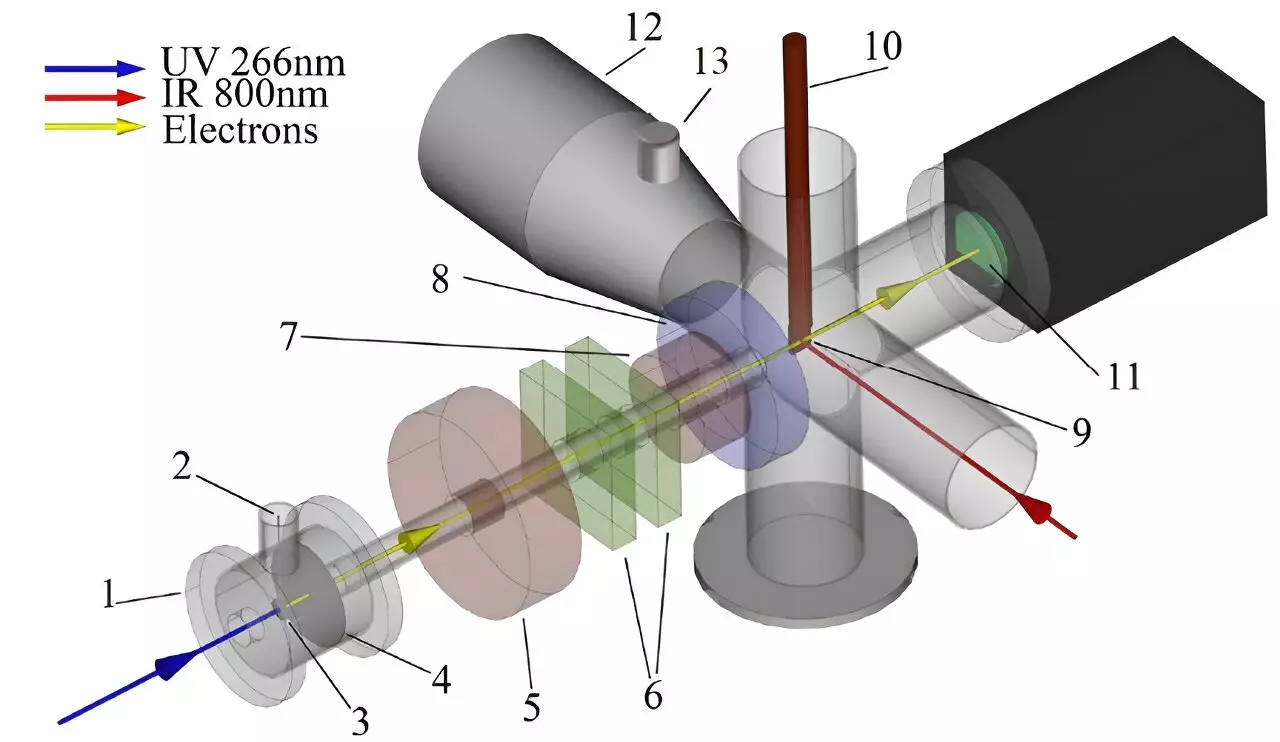In a groundbreaking stride toward the future of electronics, scientists have unveiled a method of controlling the fundamental properties of materials using different wavelengths of light. This innovative approach does more than just alter a material’s appearance; it fundamentally changes its internal state, opening the door to a new class of ultra-responsive, adaptable materials. Unlike traditional means of changing material states—such as heating or cooling—this technique employs photons to induce swift and reversible transitions, presenting a paradigm shift in how we think about material manipulation.
The core of this discovery lies within magnetite, a naturally occurring mineral with intriguing electronic properties. Researchers have demonstrated that by shining carefully selected colors of light—red and violet—on magnetite, they can steer its internal structure into distinct, non-equilibrium configurations known as “hidden phases.” These phases are akin to secret modes of operation that are normally inaccessible under equilibrium conditions, but can be persistently stabilized through precise light exposure. This fine control over the material’s internal arrangement could be instrumental in engineering versatile electronic components that are faster, more efficient, and more adaptable than their current counterparts.
Such control over phase states signifies more than just scientific curiosity; it signals a powerful new toolkit for creating next-generation memories, sensors, and quantum devices. Imagine a memory device that can switch states within picoseconds—truly lightning-fast—simply by flashing a photon of the right wavelength. This level of speed and manipulation could underpin revolutionary advances in computing, from ultra-responsive AI hardware to energy-efficient data centers. The ability to switch and stabilize particular phases with light not only enhances operational efficiency but also allows dynamic reconfiguration of electronic properties on the fly, an attribute immensely valuable in the evolving landscape of digital technology.
Decoding Hidden Phases and Non-Equilibrium Dynamics
Understanding how light influences magnetite begins with grasping the concepts of equilibrium and non-equilibrium states. At rest, a material like magnetite exists in a stable equilibrium, where atomic arrangements are balanced, and properties such as conductivity do not change over time. When external energy—like heat—is introduced, the system transitions predictably between phases, such as from insulator to conductor. This is familiar territory: water boiling or freezing, for instance.
However, the intrigue arises when that energy input disrupts this balance too rapidly or selectively, pushing the system into a non-equilibrium state. In these conditions, the material can adopt unconventional phases—its “hidden states”—that are neither stable nor easily accessible under normal circumstances. These states are transient by nature but can be stabilized temporarily or even made permanent with innovative techniques. Observing these fleeting configurations requires ultrafast measurement tools capable of capturing atomic motions in trillionths of a second, revealing the complex dance of atoms adjusting to the abrupt energy shifts.
Magnetite’s famous Verwey transition—a switch from metal to insulator at low temperatures—serves as a perfect playground for such exploration. Historically, this phase change involved subtle reconfigurations of the crystal lattice and charge distribution. The recent experiments reveal that laser excitation, tuned to different wavelengths, can either facilitate this transition into a more ordered insulating state or induce an intermediate, metallic-like phase that defies equilibrium expectations. This variability in response underscores the fine level of control achievable by selecting specific photon energies, transforming how scientists understand and manipulate correlated electron systems.
Wavelength-Dependent Control: The Key to Quantum Mastery
What makes these discoveries truly revolutionary is the demonstration that the properties of magnetite can be selectively steered simply by adjusting the wavelength of the illuminating light. When the material is hit with near-infrared pulses (~800 nm), its atomic lattice compresses rapidly, nudging it toward a cubic structure—a metallic, less ordered phase. Conversely, exposure to visible violet light (~400 nm) causes the lattice to expand and reinforce its original, more stable insulating phase.
This wavelength-specific response signifies that different photon energies interact uniquely with the material’s electronic and structural components. In effect, scientists are learning to “program” magnetite’s state by choosing the right photon color, akin to a lock-and-key mechanism at the quantum level. The ability to induce a controlled transition between phases on ultrashort timescales affords a new form of material programming—one that does not rely on thermal or chemical methods but on the finesse of photonic energy.
Ultrafast electron diffraction—a process that provides a real-time, atomic-scale movie of structural changes—has allowed researchers to observe these phenomena in stunning detail. They saw how lattice parameters shift within mere picoseconds, offering insights into the coupled electronic and structural dynamics that underpin the phase transitions. This knowledge bathes in potential; by understanding these mechanisms, researchers can craft materials with customized responses, transcending the limitations of conventional approaches.
Implications for Future Technologies and Material Design
The implications of these findings extend far beyond academic curiosity. If scientists can reliably control and stabilize hidden phases of materials through light, they can engineer devices that switch states with unprecedented speed and efficiency. Think about memory storage units that operate at terahertz frequencies or sensors that adapt their properties instantaneously in response to environmental cues. The prospect of ultrafast, light-controlled switches could revolutionize the architecture of electronic chips, pushing computational speeds into realms once deemed science fiction.
Moreover, this research hints at a future where materials themselves become programmable entities—responsive, adaptable, and capable of on-demand transformation. The potential to manipulate complex correlated systems like magnetite unlocks new pathways toward quantum computing, where controlling quantum states swiftly and precisely is paramount. It also opens doors to explore other materials that can be similarly driven out of equilibrium, broadening the palette of customizable, high-performance components.
This advance underscores a broader, more provocative insight: mastering matter at the quantum level with photons could very well be the ultimate frontier in material science. As research progresses, the boundaries between physical states, digital commands, and light themselves become increasingly blurred, heralding an era where materials are not static but dynamic participants in technological evolution.

